This is a quick weekend piece that we wanted to use to now discuss the three generations of Intel Optane DC Persistent Memory, later renamed PMem 100, PMem 200, and PMem 300. As many have heard, Intel Optane was shuttered but there is a new generation for Sapphire Rapids. Sometimes, the DIMMs can be found at low costs on the secondary markets. As a result, we wanted to make a quick reference guide for the Optane DIMMs.
How Do Intel Optane DIMMs Work?
As part of the Glorious Complexity of Intel Optane DIMMs we went into how the Optane DIMMs function in servers since it is a bit different than many expect.
In most systems, the DIMMs can run in either:
- Memory Mode – This uses the DRAM DIMMs in a system to act as a cache for the Optane DIMMs. The total memory capacity of the system is the Optane DIMM capacity since the DDR4/ DDR5 DIMMs are only acting as a cache. This mode is not persistent. Data is not retained on the Optane DIMMs through reboots of the system.
- App Direct Mode – This uses the DRAM DIMMs as memory and uses the Optane DIMMs as a low latency, high bandwidth storage medium, more like a NVMe SSD.
- Mixed Mode – Allows one to set in BIOS the portion of memory being allocated to Memory Mode and App Direct mode.
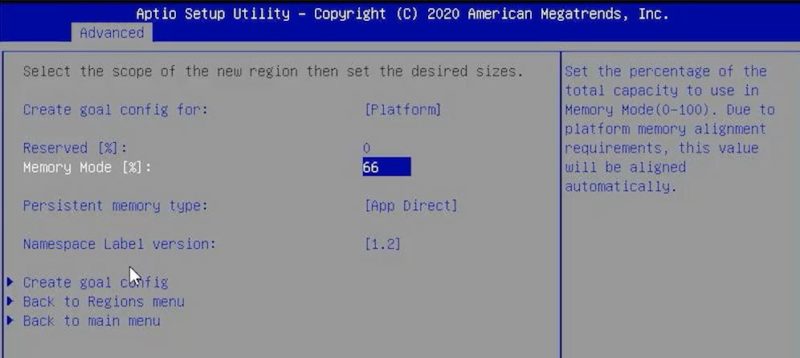
Again, for more about how this all works, see our Glorious Complexity of Intel Optane DIMMs article or the video above to see these modes in action.
With that, let us get to the DIMMs.
Intel Optane PMem 100 Generation
The Intel Optane PMem 100 generation, codenamed “Apache Pass” was the generation for 2nd Generation Intel Xeon Scalable processors codenamed “Cascade Lake.” These ran at up to 2666MT/s speeds.
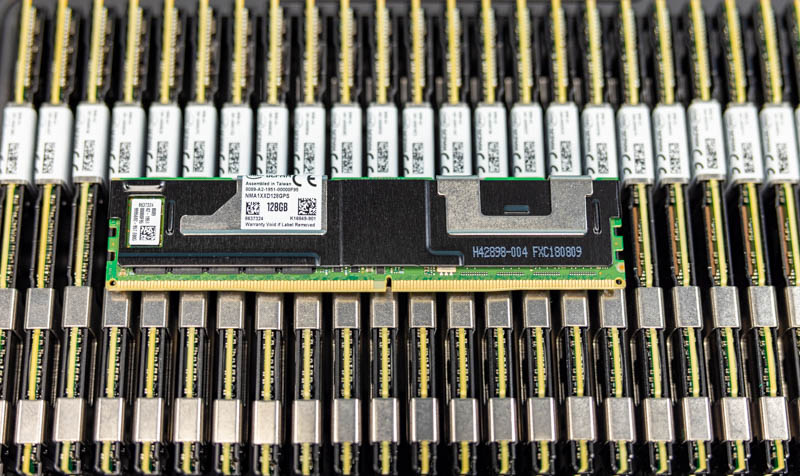
Capacities and base model strings:
- 128GB – Model string: NMA1XXD128GPS
- 256GB – Model string: NMA1XXD256GPS
- 512GB – Model string: NMA1XXD512GPS
Adding U4 (e.g. NMA1XXD128GPSU4) to the above means that it is a 4-pack. UF (e.g. NMA1XXD128GPSUF) was a 50-pack. That was consistent for all of the modules.
Here is the datasheet table:
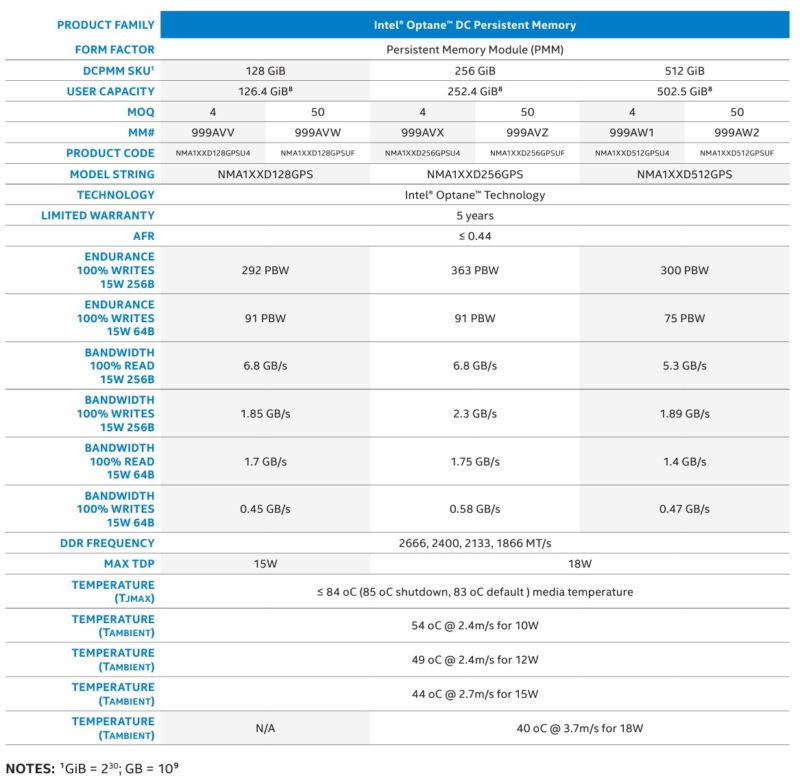
This is the first generation of the product and was originally designed to release with the 1st generation Intel Scalable Processors codenamed “Skylake” at the higher SKU tiers, but it was delayed to the second generation Intel Xeon Scalable platform.
Intel Optane PMem 200 Generation “Barlow Pass”
The Intel Optane PMem 200 generation, codenamed “Barlow Pass” was the generation for 3rd Generation Intel Xeon Scalable processors. That covered both the Cooper Lake, and Ice Lake processor series. These ran at up to 2666MT/s speeds on Cooper Lake and 3200MT/s on Ice Lake systems.
Capacities and base model strings:
- 128GB – Model string: NMB1XXD128GPS
- 256GB – Model string: NMB1XXD256GPS
- 512GB – Model string: NMB1XXD512GPS
Here is the datasheet table:
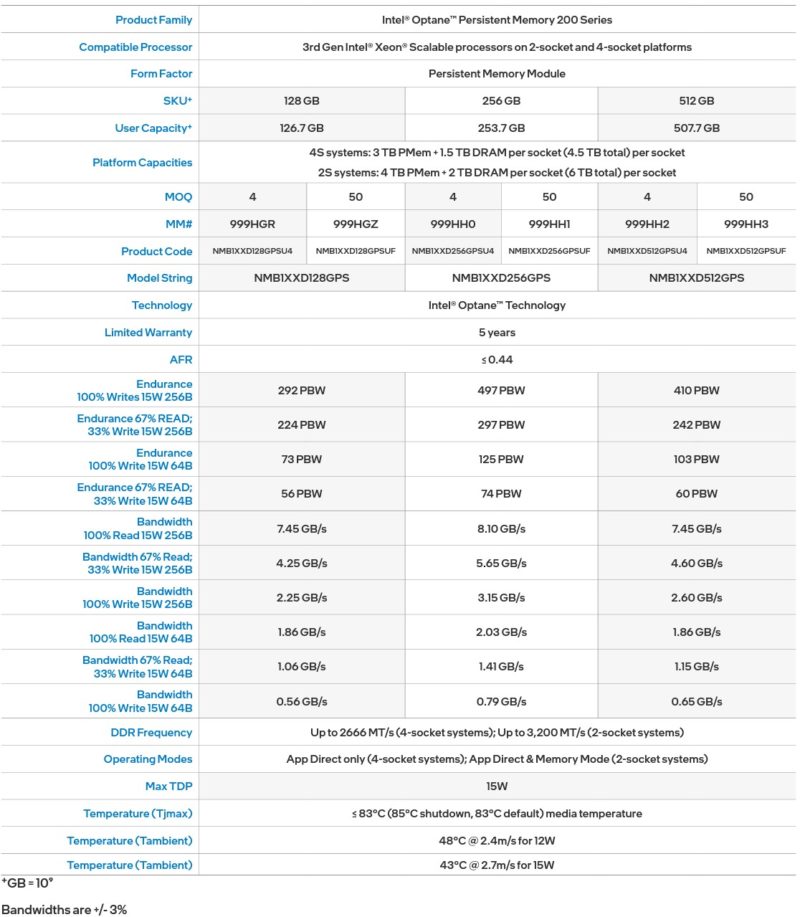
Perhaps the biggest change in this generation was on the Ice Lake Xeon side. Facing competitive pressures from AMD EPYC, Intel dropped the M and L SKUs that increased pricing for higher memory limits. This had the impact of making it significantly less expensive to deploy Optane in Intel servers.
Intel Optane PMem 300 Generation “Crow Pass”
The Intel Optane PMem 300 generation, codenamed “Crow Pass” was the generation for 4rd Generation Intel Xeon Scalable processors codenamed “Sapphire Rapids.” These are rated at DDR5-4400 speeds adding significant performance.
Capacities and base model strings:
- 128GB – Model string: NMC2XXD128GPS
- 256GB – Model string: NMC2XXD256GPS
- 512GB – Model string: NMC2XXD512GPS
Here is the datasheet table:
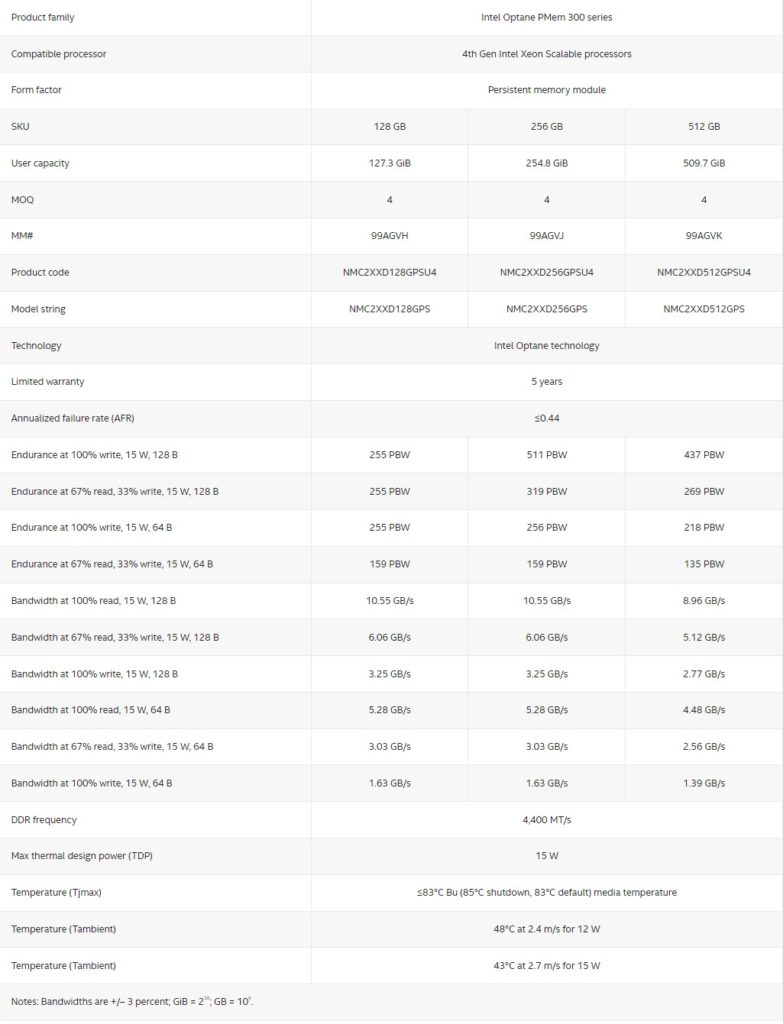
This generation has new speeds and new features.
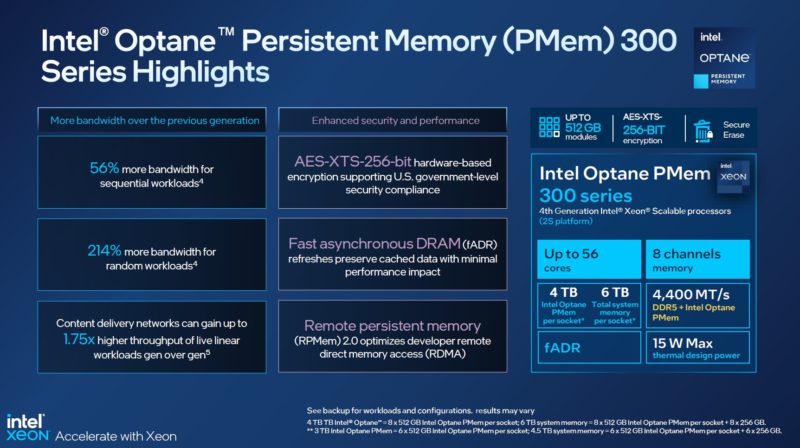
This is also the generation where the technology was being phased out and so we are not seeing a major push for the Intel Optane PMem 300 modules. Instead, it appears as though the new DIMMs are being used to service existing customers of the technology.
Final Words
If STH readers think of more information we should add, please let us know. We wanted to create an easy guide so folks could look up model strings, specs, and more for each generation of modules. In the future, as mentioned in the 2021 piece, we expect the applications that use this to transition to CXL. That is for future generations.

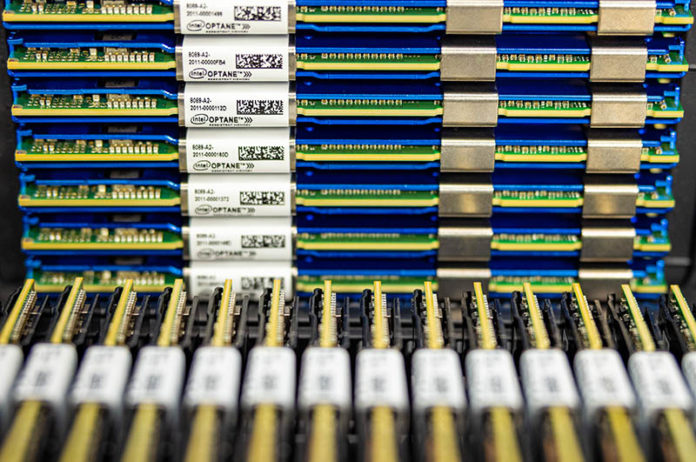



Now this is useful! Bookmarked it.
I’m still a bit puzzled by why Optane got the chop. If anything, it seems like it would get more interesting with CXL, since that will significantly expand the availability of systems that can accommodate enormous amounts of memory if a small sacrifice in speed and latency is acceptable; but doesn’t make actually buying enormous amounts of DRAM any less painful.
I bought a Lenovo laptop with Optane PMem and then replaced Windows with Fedora Linux. I asked Intel for support to configure it, and after much back and forth fumbling from them, they told me only the server line was supported and they immediately closed the ticket after some protestation. I can see why Intel is in trouble. I will only purchase AMD supported products hereafter.
The Aurora supercomputer is reportedly using Intel’s SPR-HBM and Optane and DAOS. Any idea if they are using this Crow Pass Optane on the blades?
“Sometimes, the DIMMs can be found at low costs on the secondary markets.”
In my experience that’s unfortunately really only true of 100 series. 200 series can really only be found new.
@geekster, you sure that you got PMem in a laptop, rather than an NVMe drive? I’ve never heard of such laptops.
@Gavin I think that’s because the 100 is older than the 200. So in 1-3 years the 200 will be ebay specialties
@fuzzyfuzzyfungus Because the CEO, Gelsinger doesn’t believe in memory, and he also wants the company to focus.
He was mentored until Andy Grove, the CEO that turned Intel around from a memory-centric company to a CPU one, and became very profitable. It’s also true only the #1 vendor has any chance of making decent money and that’s Samsung.
Gelsinger also cut a lot of adjacencies at VMWare. I am sad too but if it results in a revived Intel, I can accept that. They had horrible CEOs pretty much after the original founders. Actually Barrett was at least sane but he did the Pentium 4 thing. Otellini was a finance CEO which led him to decline a very lucrative deal which is the iPhone/iPad. And Kraznich is just bat shit crazy.
@fuzzyfuzzyfungus Optane memory needs to be sold like pancakes and mass manufactured to be break even. Optane was sold with unbalanced deficit price to accelerate its adoption (10 doller loss per memory). But radically new concept of non-volatile main memory needs significant rewrite to OS and app to fully utilize its capability and it does not get wide adoption. Huge loss every year and project was axed.
Sad thing is a well performing 16GB Optane DIMM on normal desktops could have spurred the development of more use cases while actually being profitable. The actual products of 16GB cache SSDs for hard drives and expensive server DIMMs left the biggest market – everything already with an SSD that isn’t a server – untapped.
Geekster is probably referring to an Optane H10 SSD, which is not the same category as these DIMMs.